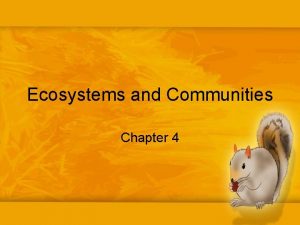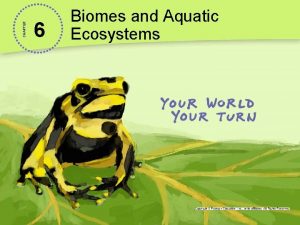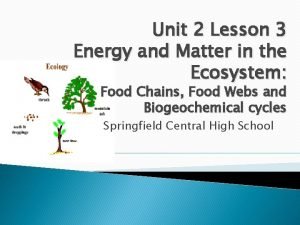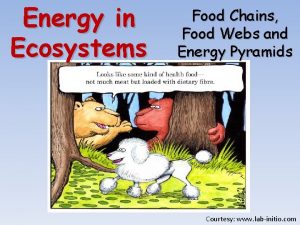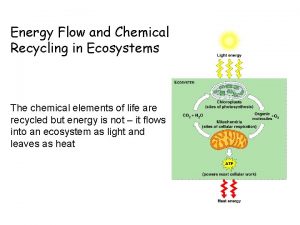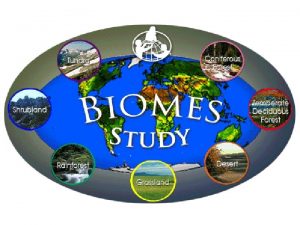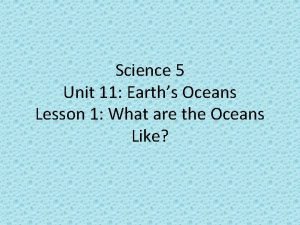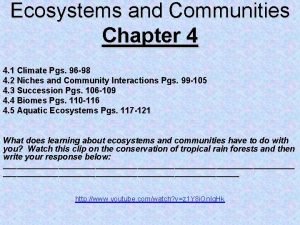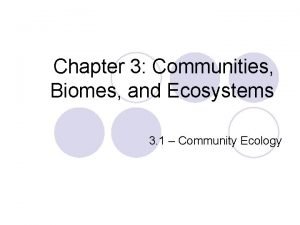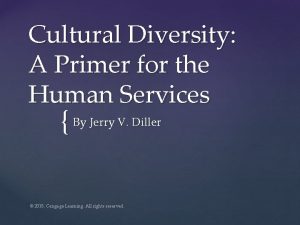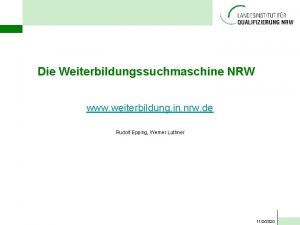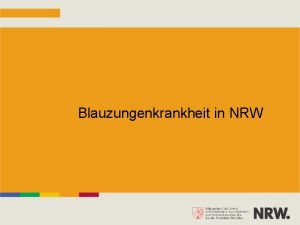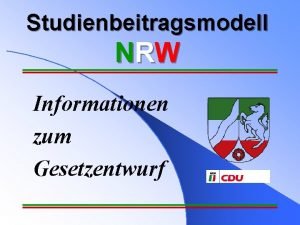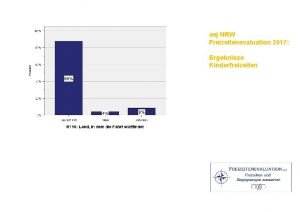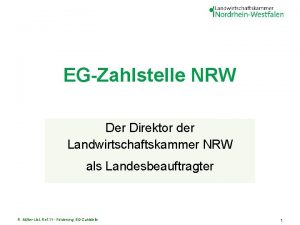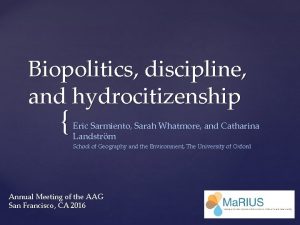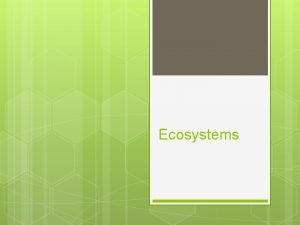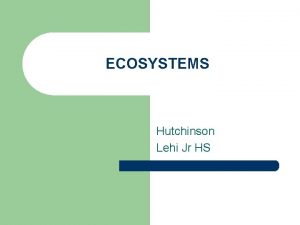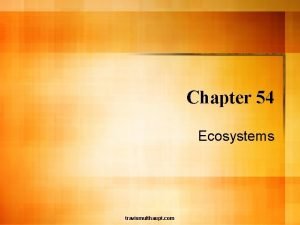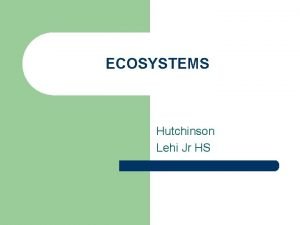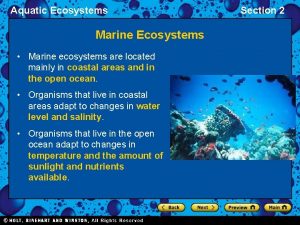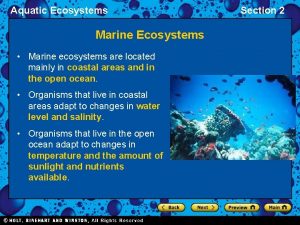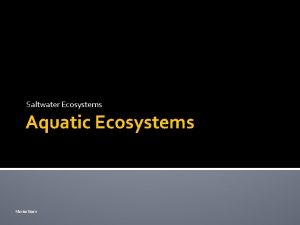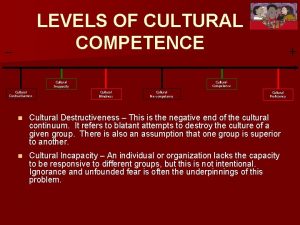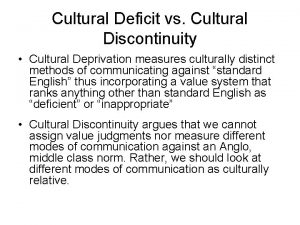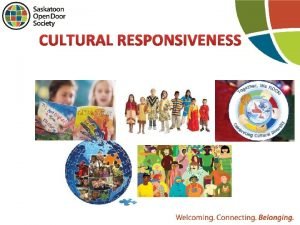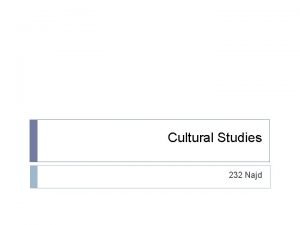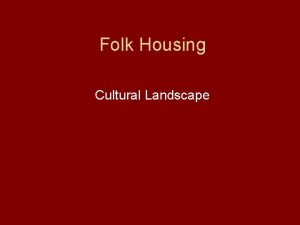Cultural Ecosystems Services and the Hydrocitizenship project NRW






























- Slides: 30

• Cultural Ecosystems Services and the “Hydrocitizenship” project • NRW workshop: An Ecosystem Approach for Biodiversity and Human Well-being. Feb 5 th 2015 • Dr Alex Plows, Bangor University

This talk will provide: • Overview of the “Hydrocitizenship” project and the Wales “Cymerau” case study. • A short overview of “cultural ecosystem services” (National Ecosystems Assessment) • Summing up: Towards mixed methods, practical and applied approaches to understanding more about how and why people value nature, and why this matters.

Why does it matter to know more about how and why different publics value nature? For its own sake. (important! “intrinsic value” of nature) “To support decision-making”… (NEA 2014) We currently have an evidence gap with regards to “cultural ecosystem services”: identifying the “non- material benefits” which nature provides, and identifying and/or exploring their significance, such as links to material benefits such as health and wellbeing.

Also… • Public and stakeholder views and values, and “local knowledge” and expertise, can inform and shape policy in particular contexts such as flood management plans. Understanding more about peoples views and values can also help with managing contentious planning issues and competing interests. • There is a need to develop interdisciplinary practice: social sciences, arts and humanities, working with ecologists, planners and other disciplines and stakeholders.


Introducing “Hydrocitizenship” http: //www. hydrocitizenship. com/ • A three year Arts and Humanities Research Council (AHRC) funded project involving many different universities, artists, community groups and academic disciplines. Part of AHRC “Connected Communities” programme “This 3 year project will investigate, and make creative contributions to, the ways in which citizens and communities live with each other and their environment in relation to water in a range of UK neighbourhoods…[enabling] creative conversations about. . . people and their diverse relationships with water, environment and non-human communities”

Key points about Hydrocitizenship: • Interdisciplinary, with a focus on arts- led participatory approaches to exploring issues of water, citizenship, community • Place- based: four case study sites: Bristol, the Lee Valley London, Shipley, and Mid Wales (Borth/Tal y Bont). • Horizontal structure: Community partners and local artists in each case study are working in partnership with each academic team; • Potential to inform policy. NB. “Better ways of enabling public participation and finding out what people think” (about water, about nature, about particular water policies/ issues, about their own ‘patch’ and lived practice) is a likely outcome of this project but “better governance” is not its key focus per se.

Lee Valley London Shipley, Yorkshire Borth and Tal y Bont, mid Wales Bristol

Borth and Tal y Bont, mid Wales : “Cymerau “– “Convergence”




Introducing the National Ecosystem Assessment concept of “cultural ecosystem services”: Cultural services: The non-material benefits people obtain from ecosystems. For example, through : • spiritual or religious enrichment • cultural heritage • recreation and tourism • aesthetic experience http: //uknea. unepwcmc. org/Ecosystem. Assessment. Conc epts/Ecosystem. Services/tabid/103/Def ault. aspx

Why try to identify and quantify “non material benefits” of nature? “To support decision-making”… (NEA 2014) • Potential to quantify, or at least to explore, possible/likely links between these types of “non material benefits” and “material benefits” (eg wellbeing, health savings)

Potential to use insights as part of place- based planning tools which take non-material values into account: • As quantitative measures of value(s) • As exploratory narratives of value(s) • As deliberative exercises enabling different stakeholders, public groups etc to explore and to share perspectives on how and why they value particular places- this may help with navigating and/or mitigating differences of opinion between stakeholders = “upstream public engagement” (Demos) • Potential for such insights to help with linked policy goals, such as ‘behaviour change’

Some problems • Missing the point- square pegs round holes- too reductive? Theoretical and practical problems with “converting” (eg) spiritual values into an economic score. • Very time –consuming to do well and thoroughly. “thin” descriptions unless done properly • Narrative exploratory and deliberative approaches provide “thick description” but still the problem of “apples and pears”- ie comparing an ecological biodiversity score with a narrative of how and why people value a particular place.

Interdisciplinary and mixed methods tools are necessary. “A range of quantitative and interpretative research techniques are required to gather evidence for cultural ecosystem services and the benefits they provide to human well-being” (NEA) Mixed methods from different disciplines, eg: • Social science: Qualitative (deliberation, participation) and quantitative (measuring, modelling). Background social/cultural data. • Arts: interpretative, exploratory, performative • Ecological and environmental data

Where social science and the arts come in… • The findings of the UK NEAFO reinforce the case for using mapping techniques to develop a participatory approach to assessing cultural ecosystem services. . . Participatory mapping produces new understandings of the cultural significance of ecosystems and helps bring latent cultural values to light, which may remain hidden when using other methods. The use of art-based mapping techniques can further animate and expand the understanding of cultural ecosystem services among communities. Creative approaches influenced by research in the arts and humanities not only provide new forms of evidence for decision-makers, but can help engage communities and engender stewardship of local natural resources (NEA 2014)

Hydrocitizenship: methods for exploring value(s) of use to NEA objectives. • A hub, a collection point for other projects, perspectives and approaches. • Place- based and arts- led approaches to co- creating community –led expressions of value and interest in relation to water: ‘participatory action research’ • “layering” of different information (social, ecological etc). Lots of maps! • Project not designed for “better governance” per se- but will provide insights about values and nature, and provide methodological pointers.

Hydrocitizenship: a hub for like minded projects and people

Hydrocitizenship: a hub for like minded projects and people

Hydrocitizenship: facilitating discussion about peoples values and nature

Hydrocitizenship: methodological examples

Hydrocitizenship: methodological examples (Lee Valley)

Hydrocitizenship: methodological examples (Shipley)

NEA: Participatory and deliberative place based example: Hastings This in-depth local case study focuses on valuing ecosystem services around inshore fisheries and marine conservation in Hastings, Sussex. Working with the Hastings Fisheries Local Action Group (FLAG) this case study focused on shared values for the cultural benefits of the marine environment and activities within it, particularly inshore fisheries, such as a shared sense of identity and sense of place. The main stage of data gathering consisted of three intensive workshops with local stakeholder representatives… The initial part of workshop 1 focused on discussion of transcendental values and wellbeing…A number of values emerged as being dominant including ‘sense of belonging’; ‘enjoying life’; and ‘protecting the environment’. Values of self-direction (including creativity and freedom) and social justice also featured prominently….

• Participants continued making extensive connections between a wide range of issues in a conceptual systems modelling exercise… Results showed an appreciation of the highly inter-linked (and complex) nature of the relationship between variables as participants made extensive linkages between ecological, social, economic and cultural variables. Wellbeing was related to not only economic factors but also pride of place, social cohesion, social justice, biodiversity, and, in the long term, resilience to climate change. • NB This to me flags up difficulties with quantifying such “non material” value(s) in economic terms…

Leader £ 10, 00 Cylch Meithrin SROI £ 1/£ 4. 89 Total value including 10% deadweight and leakage £ 48, 908 Active, Inclusive and Safe Improved access to community resources 20 additional weeks of support for 16 children £ 2, 252 x 16 x 0. 38 = £ 13, 692 Increased volunteering 16 children increasing healthy living 95 hours £ 650 Improved wellbeing 16 x £ 2500 = £ 40, 000 Catalys: Social Return on Investment (SROI) calculations of ‘added value’ including wellbeing

Total £ 325, 000 Leader £ 100, 000 Total value including 10% deadweight and leakage £ 1, 057, 353 Aberystwyth Market Hall SROI £ 1/£ 3. 25 Active, Inclusive and Safe Thriving 14 stalls holders and 4 incubator units 40 volunteers 18 jobs supported Improved well being through greater use of community space Increased volunteering Increased employability of local people 40 x 13, 500 = £ 540, 000 18 x 3, 800 = £ 68, 400 3750 households spend 5% of indicator value at hall £ 3021 / 20 x 3750 = £ 566, 437

• Diolch am eich amser! • Thanks for listening! • • • http: //www. hydrocitizenship. com/ http: //www. hydrocitizens. com/ http: //ecosystemsknowledge. net/node/2206 (above page has links to NEA “Follow On” research projects) http: //www. catalys. org/ • a. plows@bangor. ac. uk
 Ecosystems and communities chapter 4 answer key
Ecosystems and communities chapter 4 answer key Chaparral biomes are generally _______.
Chaparral biomes are generally _______. Why biomes are important
Why biomes are important Phosphorus cycle pearson education
Phosphorus cycle pearson education Chapter 42 ecosystems and energy
Chapter 42 ecosystems and energy Chapter 3 lesson 3 biomes and aquatic ecosystems
Chapter 3 lesson 3 biomes and aquatic ecosystems Differences between aquatic and terrestrial ecosystems
Differences between aquatic and terrestrial ecosystems How does energy flow in an ecosystem
How does energy flow in an ecosystem Phosphorus cycle
Phosphorus cycle Lab food chains and energy in ecosystems
Lab food chains and energy in ecosystems Motive force
Motive force Chapter 55 ecosystems and restoration ecology
Chapter 55 ecosystems and restoration ecology Biomes and aquatic ecosystems
Biomes and aquatic ecosystems Introduction of water pollution
Introduction of water pollution Oceans map
Oceans map Chapter 4 ecosystems and communities
Chapter 4 ecosystems and communities Three biotic factors
Three biotic factors Cultural diversity a primer for the human services
Cultural diversity a primer for the human services Hình ảnh bộ gõ cơ thể búng tay
Hình ảnh bộ gõ cơ thể búng tay Lp html
Lp html Bổ thể
Bổ thể Tỉ lệ cơ thể trẻ em
Tỉ lệ cơ thể trẻ em Voi kéo gỗ như thế nào
Voi kéo gỗ như thế nào Tư thế worm breton
Tư thế worm breton Chúa sống lại
Chúa sống lại Môn thể thao bắt đầu bằng từ chạy
Môn thể thao bắt đầu bằng từ chạy Thế nào là hệ số cao nhất
Thế nào là hệ số cao nhất Các châu lục và đại dương trên thế giới
Các châu lục và đại dương trên thế giới Cong thức tính động năng
Cong thức tính động năng Trời xanh đây là của chúng ta thể thơ
Trời xanh đây là của chúng ta thể thơ Mật thư anh em như thể tay chân
Mật thư anh em như thể tay chân
